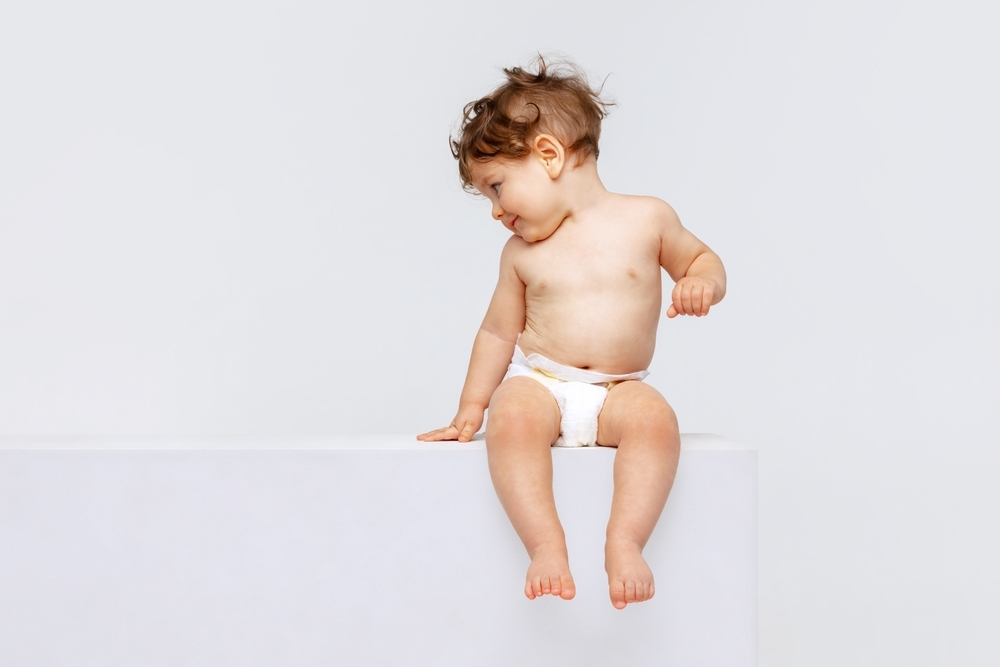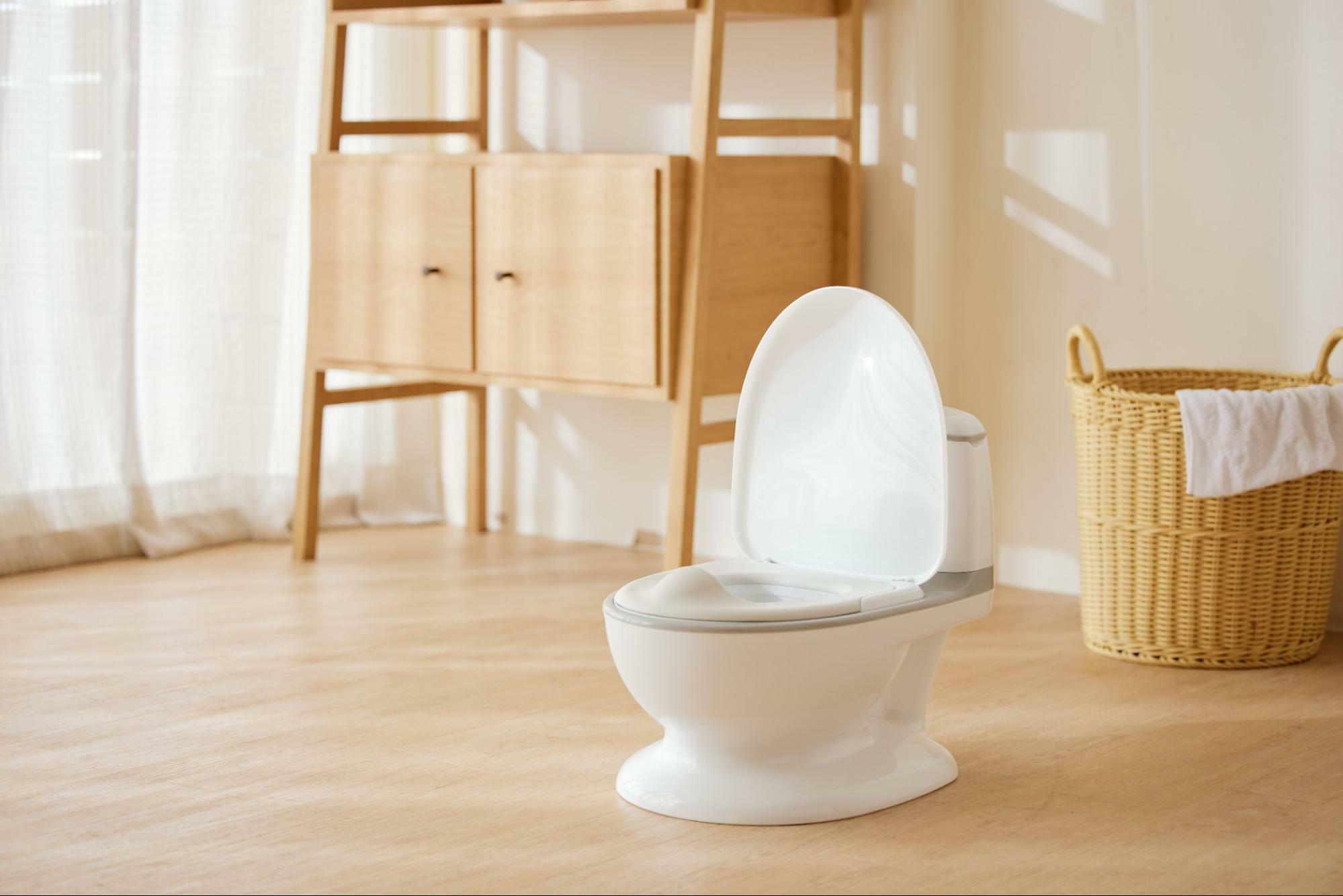
As babies grow older, "At what age should we start weaning off diapers?" has also become a question that many parents are concerned about. Weaning off diapers too early may not only cause anxiety and depression in the baby, but may also lead to holding back urine or frequent urination . In fact, there are no other techniques to help your baby successfully wean off diapers. Carefully observe your baby's development, adopt a progressive method of diaper weaning, use auxiliary tools (for example: diaper weaning toilet), and accompany your baby's growth with patience and full of love. The best way. This article has compiled some tips you can refer to when weaning off diapers and provides them for parents’ reference.
At what age is the best age to start weaning off diapers? Cooperate with these three aspects of development and adapt to the baby's growth process
Every baby is unique and has its own growth trajectory. Therefore, there is no certain standard answer to the age at which children can stop wearing diapers. It does not mean that the age at which other people’s children stop wearing diapers means that their own children must also do the same. Yes, older siblings and younger siblings in the same family may be ready at different times. Generally speaking, the success of quitting diapers is not affected by a single factor. You can observe the following three directions to see if your baby is ready.
Key points to observe when quitting diapers 1: Physiological development
Whether the baby's ability to control the bladder and sphincter has matured is the key to successfully weaning off diapers. If the baby cannot control the timing of excretion, no amount of teaching and techniques will be effective, and it is more likely that both parents and children will feel frustrated in the process. Under normal circumstances, the baby can gradually master the opportunity to control excretion around 12 to 18 months after birth. If it is observed that the baby's diaper can stay dry for 3 to 4 hours without changing, it means that the baby is gradually physiologically ready. Quit diapers. With this physiological development process, it is generally recommended to slowly start preparing for diaper weaning training between the ages of 2 and a half to 3 years old. However, this time point is not absolute, and parents do not need to be overly impatient. Stay patient and monitor your child's condition at all times, which will have a positive impact on weaning off diapers.
At the same time, the baby must also have the physical ability to "move to the toilet on its own" and the method of "sitting and exerting force". Some babies are not able to exert force in the sitting position and "uh huh" and need to stand or lie down. , that’s why you can’t give up diapers completely. Never force your baby to do so.
Key point to observe when quitting diapers 2: Psychological sense of security
Changing the habit of wearing diapers has a great psychological impact on the baby, so parents can take a gradual approach to help the baby adapt to the new habit. At the same time, it is best not to make it at the same time as other life changes such as quitting pacifiers, bottles, and breast milk, so as not to put too much pressure on the baby.
In addition, you should also pay attention to whether the baby is anxious or resistant to going to the toilet? If there is obvious resistance, it is likely that the baby is not ready yet. Do not change the habit forcefully or scold the baby, so as not to make the baby more uneasy and stressed about quitting diapers.
Key point to observe when quitting diapers 3: Cognitive ability
The so-called cognitive ability refers to the baby's ability to cognitively connect "objects and behaviors". For example, he needs to lie on the bed to sleep at night, enter the bathtub when taking a bath, and be able to recognize the diaper when excreting. The feeling of stuffy heat and discomfort, as well as the so-called "want to pee/hmm" feeling, can help the baby establish the understanding of "sit on the toilet when going to the toilet".
Tips for quitting diapers revealed | Master 4 methods to quit diapers and say goodbye to diapers easily

Weaning your baby off diapers is not something that can be done overnight. Here are 4 tips for weaning off diapers. Parents can try various methods based on their baby's situation to help their baby learn faster.
Method 1 of quitting diapers: Adapting to the feeling of "not wearing diapers"
For babies, wearing diapers from birth can easily make them feel familiar and even at ease with diapers. Therefore, letting babies adapt to not wearing diapers first can effectively reduce the baby's insecurity. For example, after taking a bath and drying off, don't rush to put on a diaper. Let your baby play more on the bed or play mat to get used to the feeling of not wearing a diaper. If the baby does not reject it, you can also let him wear children's underwear or "study pants" to adapt. It is recommended to start weaning the baby from diapers in late spring and summer when the weather gets hotter. On the one hand, it can avoid catching colds, and on the other hand, it is necessary to change underwear frequently in the early stage. Practice in a pleasant climate, whether it is to bathe the baby or clean it. The environment, washing and drying clothes are also more convenient.
Method 2 of quitting diapers: Learn to express your wish "I want to go to the toilet"
Babies before 2 years old may not be able to speak complete sentences. You can help the baby understand words related to the toilet, such as "pee", "pee", "um", or by touching the belly. When body language expresses the desire to go to the toilet, especially during the language explosion period around 2 years old, the baby may be more willing to share his feelings with the surroundings. You can take this opportunity to let the baby learn to express the need to go to the toilet and guide the baby to go to the toilet.
In addition, if babies know how to respond to the need to go to the toilet, it also means that their feelings about dirty diapers are not good to a certain extent. It is also a more appropriate time to conduct diaper weaning training when babies have this understanding. .
Method 3 of quitting diapers: Choose a suitable study toilet
The baby is not very tall when weaning from diapers. It is not only inconvenient to use an adult toilet, but also worries about the baby bumping and falling in the bathroom. You can choose a suitable learning toilet and place it near the toilet or on the route where the baby can play. It can be touched from time to time to reduce the baby's unfamiliarity with the "toilet". Potty learning is not only safe for babies to use, but also allows babies to deepen their impression of toilet learning through "imitating" behaviors.
Method 4 for quitting diapers: Regular reminders to guide toilet time
In the early days of quitting diapers, the baby may not be able to learn to use the toilet because he is not used to expressing his toilet needs or has physiological development reasons. Parents can ask more frequently, "Does the baby want to use the toilet?" and practice sitting on the toilet with the baby. , and observe the time it takes for the baby to defecate after eating and drinking water, and guide the baby to practice going to the toilet at about the same time.
What to do if you fail to quit using diapers? Step-by-step guidance so that your baby is not afraid of going to the toilet
In the process of quitting diapers, the most important things are "observation" and "patience". Some parents will be nervous when they hear words such as "Why are you still wearing diapers when you are 3 years old?" or "Our baby doesn't need diapers when he is 2 and a half years old." They are worried that their child's development is slowing down, but every child has it. In the course of their own development, some babies will express their willingness to go to the toilet when they are 1 and a half years old, and some babies are not willing to stop using diapers until they are 4 years old. Therefore, parents do not have to worry, patiently eliminate the factors that make the baby unwilling to stop using diapers, and praise the baby when he successfully goes to the toilet. And encourage, and don’t blame yourself too much for the parts you haven’t noticed. Even if you fail to quit diapers, don’t be discouraged. With step-by-step guidance, you will definitely be able to accompany your baby to quit diapers smoothly.
If your first attempt to quit diapering fails, you can first confirm that your baby is physically ready, and then focus on the psychological factors to adapt. The following is a guide for learning to use the toilet. Only by taking into account the baby's cognitive, physiological development and psychological aspects can it be easier to quit diapers.
4-step guide to quit using diapers and using the toilet: Pair it with a learning toilet so that children can gradually master and get used to it
- STEP1: Let the baby understand the purpose of "toilet". Place the learning toilet near the adult's toilet, and you can take the baby to use the toilet together to build up the awareness of "going to the toilet".
- STEP2: Practice letting your baby express his toilet needs, for example: "I want to pee", and guide the behavior of "sit on the toilet if you want to go to the toilet".
- STEP3: Start the "No Diaper Challenge". You can practice it when you are at home for a long time, and slowly let your baby know "If you want to go to the toilet, you have to tell an adult" and "Uh-huh/You have to sit on the toilet to pee."
- STEP4: After the baby gets used to it, he can guide his daily habits, such as wiping his own buttocks, flushing water, etc.
Recommended toilet for quitting diapers|LOVON simulation learning small toilet

There are many learning toilet options on the market, many of which are toy-shaped and colorful. However, the styles are similar to ordinary toilet seats and have the advantage of making it easy for babies to adapt. The LOVON simulation learning small toilet features a "simulation" appearance design to satisfy the growing baby's imagination of being "just like an adult". It is equipped with flushing sound effects and light buttons (only sound and light effect prompts, no actual flushing function) and tissue box In the storage area, develop the awareness and habit of flushing the toilet after using it and wiping your own butt. The PP material seat is soft and skin-friendly, the ergonomically widened design, and the base are safe and non-slip, making it safe for your baby to use every day. The detachable potty and baffle design make cleaning easy and burden-free, making it easier for babies to learn to use the toilet on their own.
The above is a little knowledge about how to stop using diapers. I hope it can give more confidence and support to every parent who cares about accompanying their babies. If you want to know more about baby’s growth, please refer to further reading:

